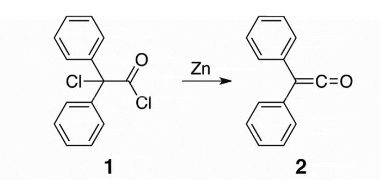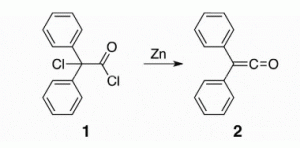After over a century of neglect, Ketenes have reemerged as a useful tool for synthetic chemists and materials scientists. Ketenes, a class of organic compounds, have found a host of revolutionary new applications in medicine, commodities, and photolithography.
The Ketene function group was first discover in 1905 by none other than Hermann Staudinger, widely considered the father of polymer chemistry. At the age of 25, Staudinger succeeded in synthesizing and characterizing the first ketene. The discovery, one of the last major function groups reported in organic chemistry, served as the basis of his work for before his landmark paper 1925 paper on polymerization. While Staudinger’s work on polymers would win him the 1953 Nobel Prize, ketenes became something of a forgotten functional group.
Dr. Craig Hawker, coauthor of “The Emerging Utility of Ketenes in Polymer Chemistry,” recently published in the Journal of Polymer Science, Part A: Polymer Chemistry, has a few reasons for the long neglect. “Ketenes have been neglected in polymer chemistry primarily because there was no reliable and user-friendly method to access ketenes in materials. The recent implementation of a number of ketene precursors that can be incorporated into polymers … has resulting in growing interest in ketenes as a functional platform for applications in engineered materials.”
Indeed, modern advances can be attributed to the continued discovery of ketene precursors that can provide the functional group on demand when required. Among the many applications of ketenes is replacement of polycarbonates, offering the same properties while eliminating the use of bisphenol A, a known endocrine disruptor. Medical applications include the use in delivery of medical dyes and chemotherapy drugs to targeted sites in the body. Additional applications can be found in high-voltage cable insulation, replacement joints, hot water piping, and lithography.
According to Dr. Hawker, “Ketenes have distinguished themselves as one of the most efficient and selective methods to thermally crosslink polymers. Beyond this simple but powerful application, ketenes will find use in applications that require on-demand access to both crosslinked and reactive materials. These hold great potential for thermally activated functional coatings and films in microelectronic and energy applications.”
Although ketenes have long been one of the most under-appreciated functional groups in polymer science, their rediscovery and unique chemistry has led to a host of revolutionary applications. It also serves as an example of the utility of other under-explored functional groups. Undoubtedly, Hermann Staudinger would be proud.


















